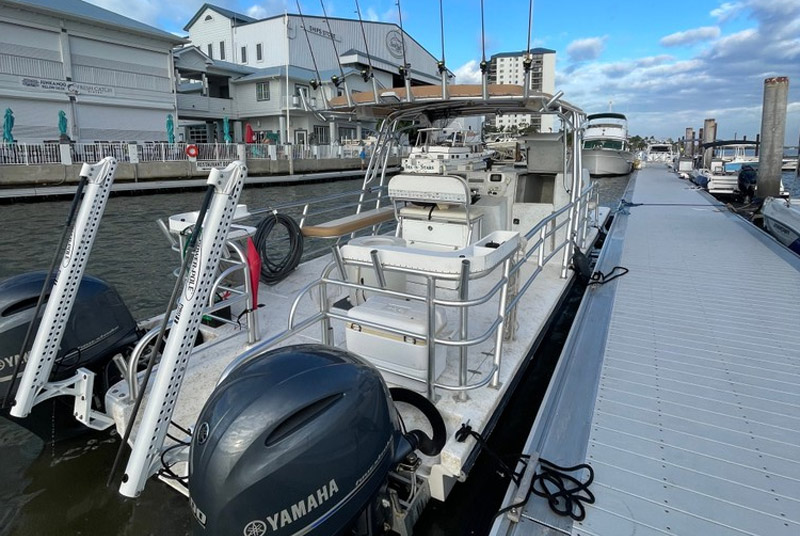
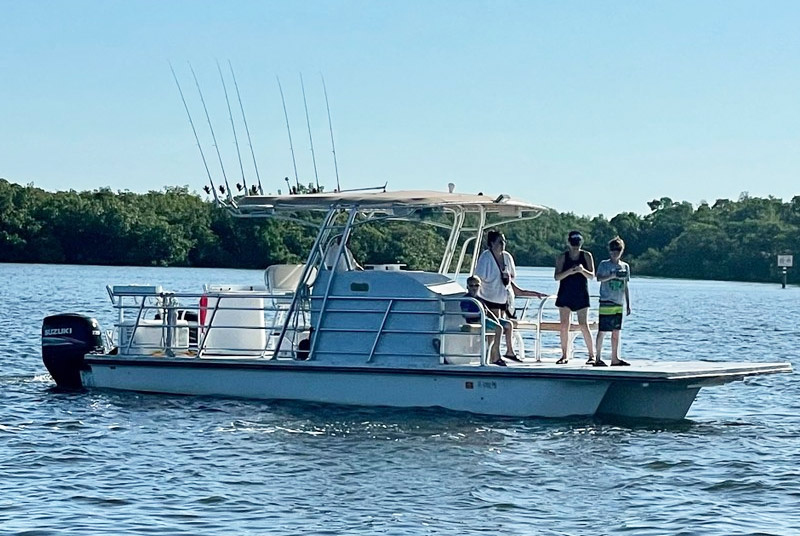
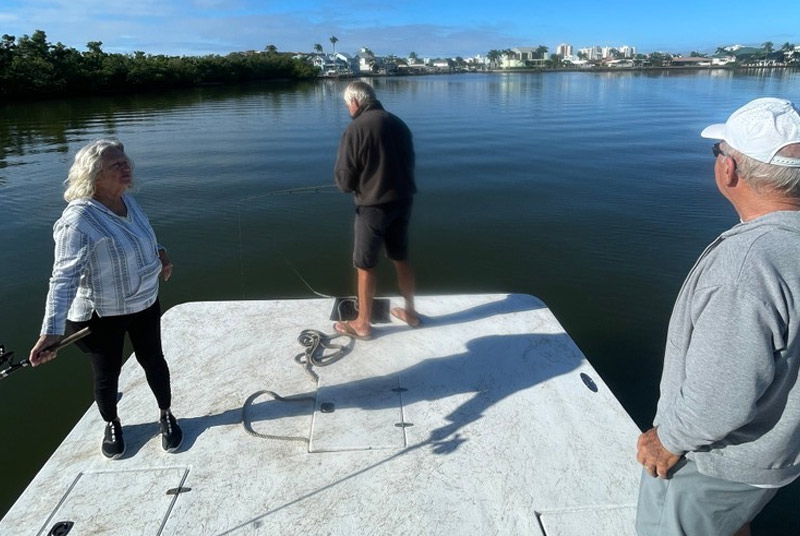
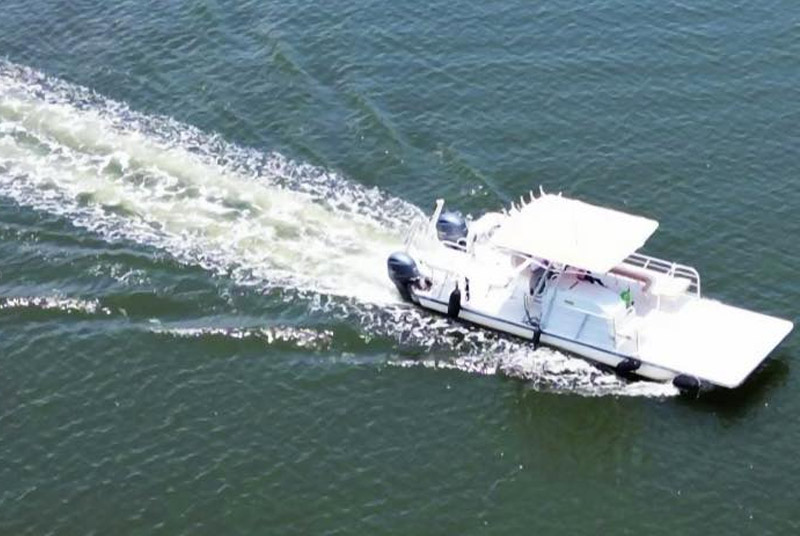

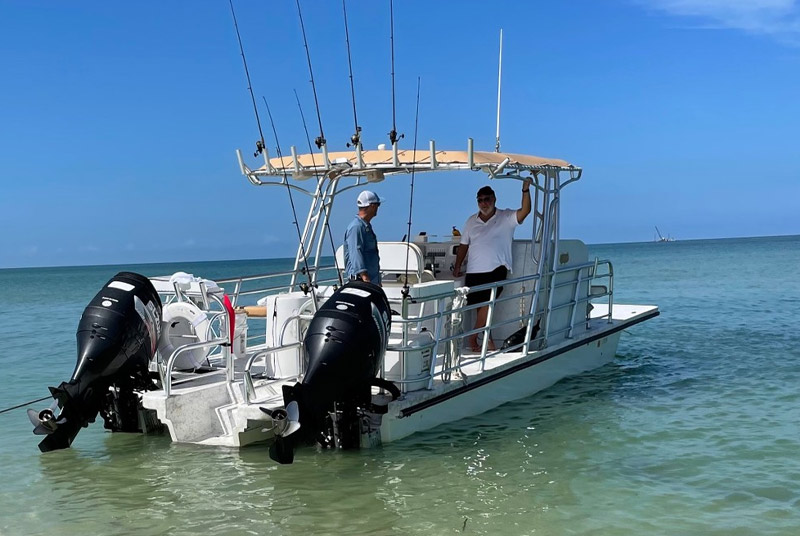
Backwater fishing on our 31′ custom-built fishing cat, Tina Maria, is the most stable vessel around, perfect for the expert angler to the newest linesiders. She is a smooth ride and boasts twin 200 hp engines.

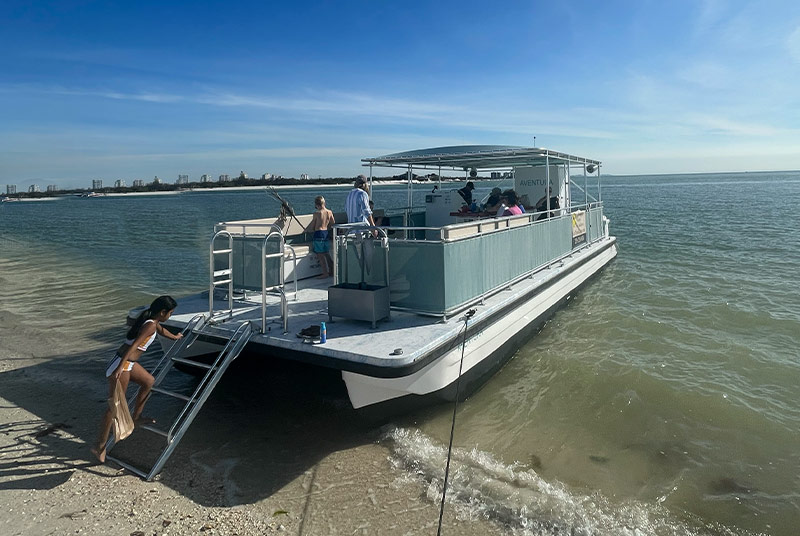

She’s our super spacious power cat, equipped with everything you need for a memorable day on the water.